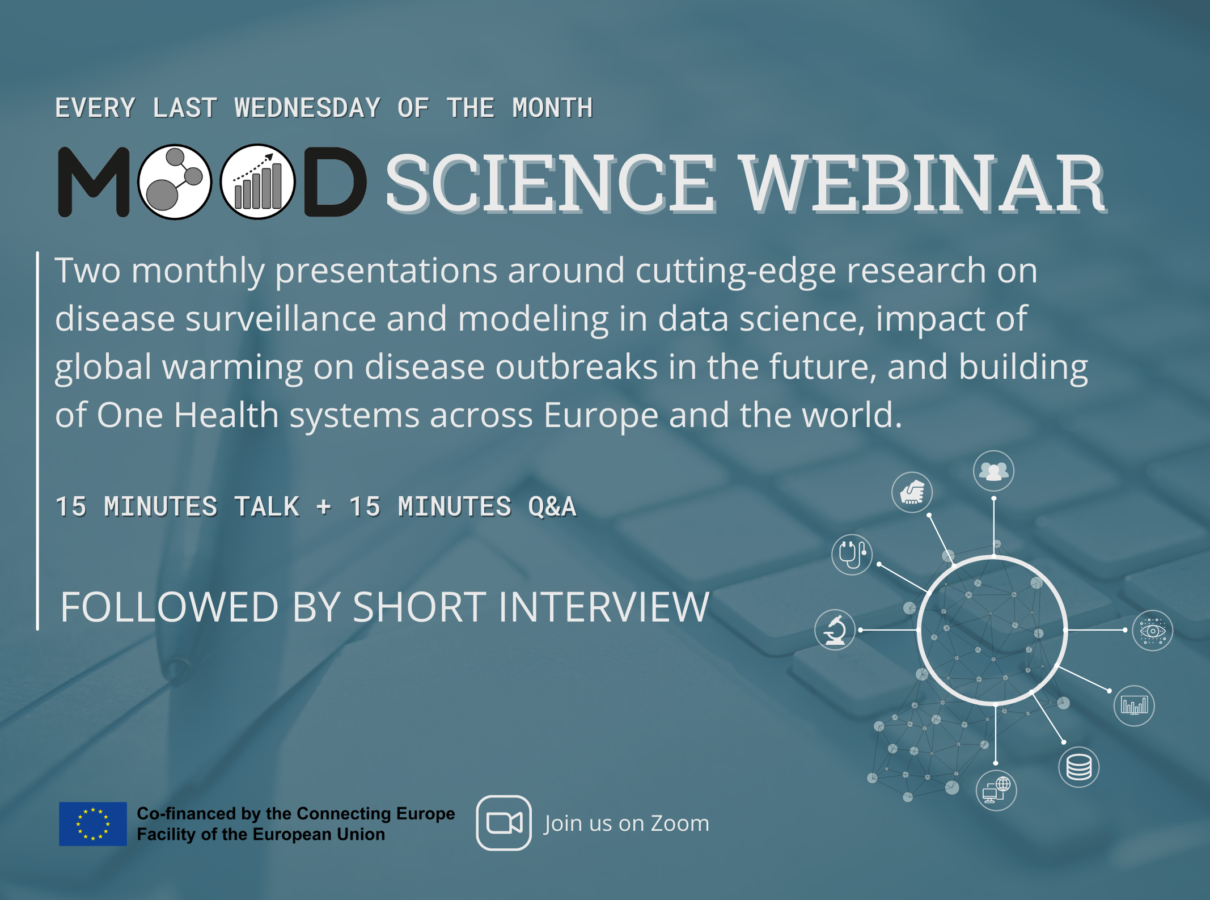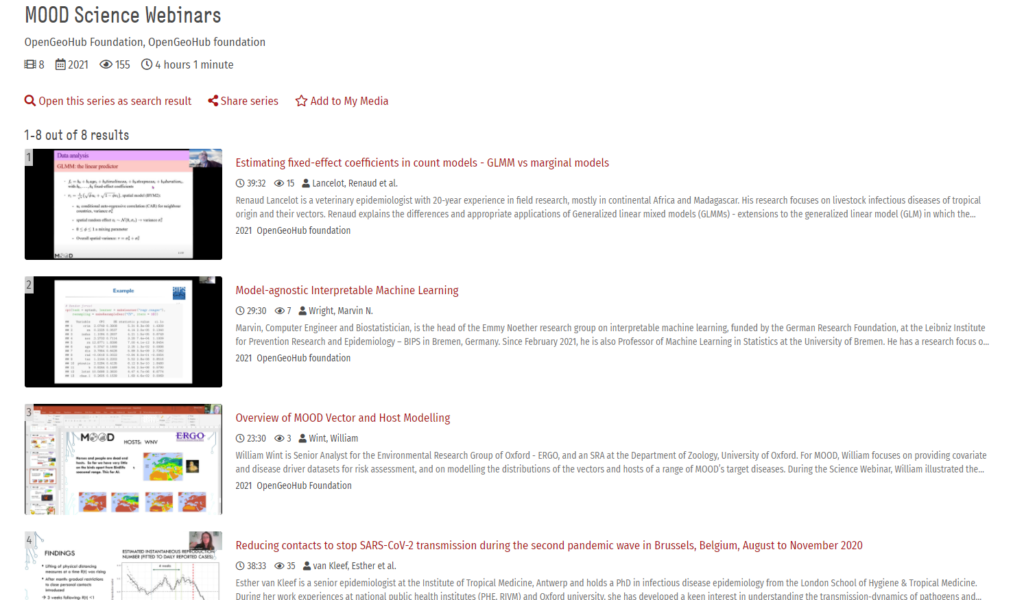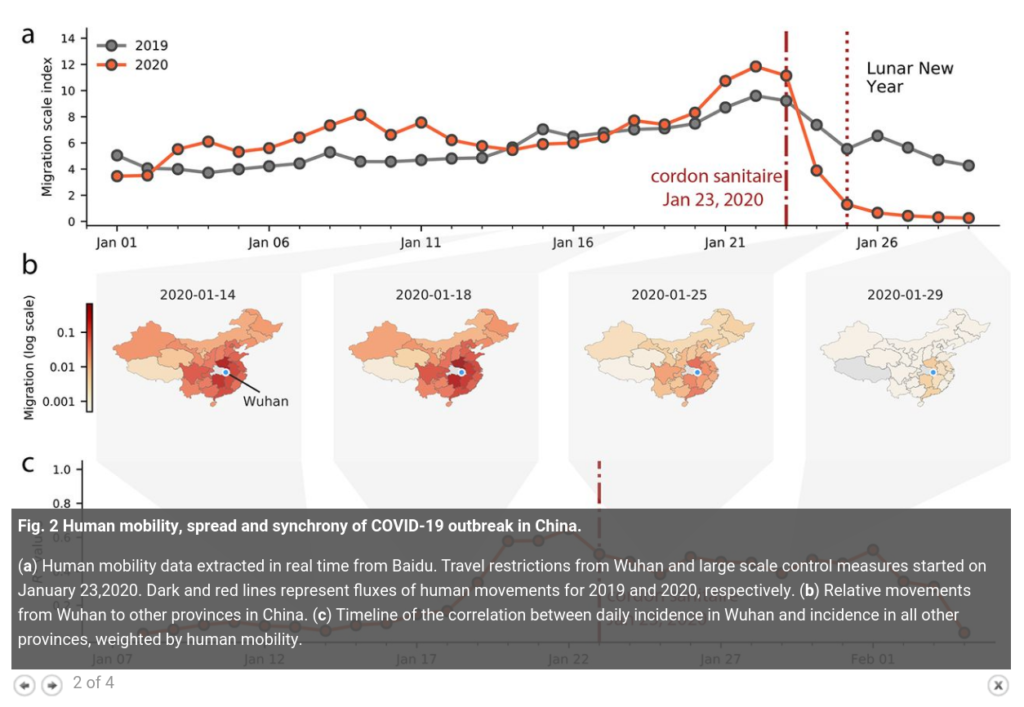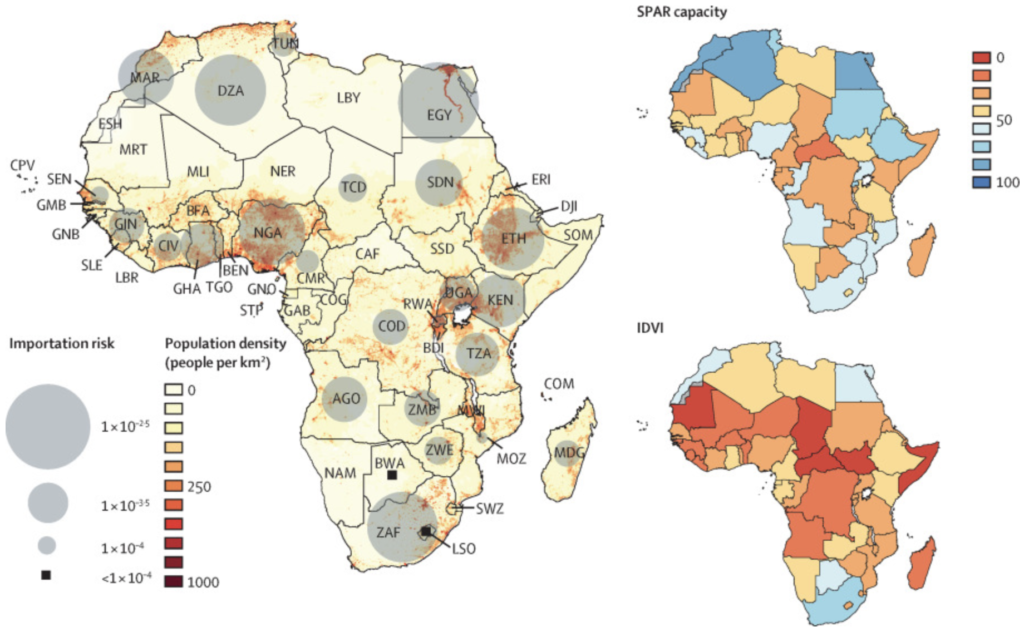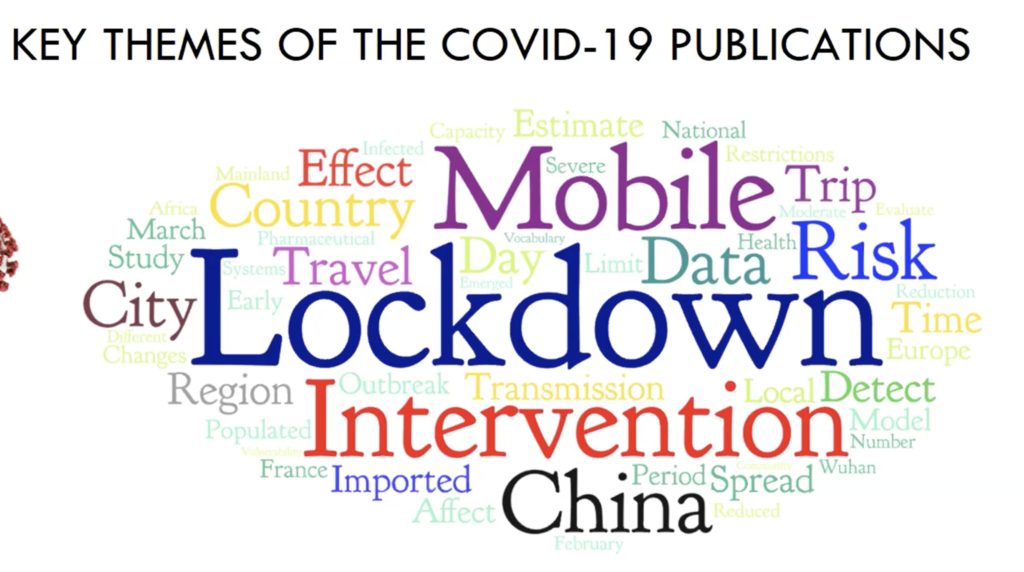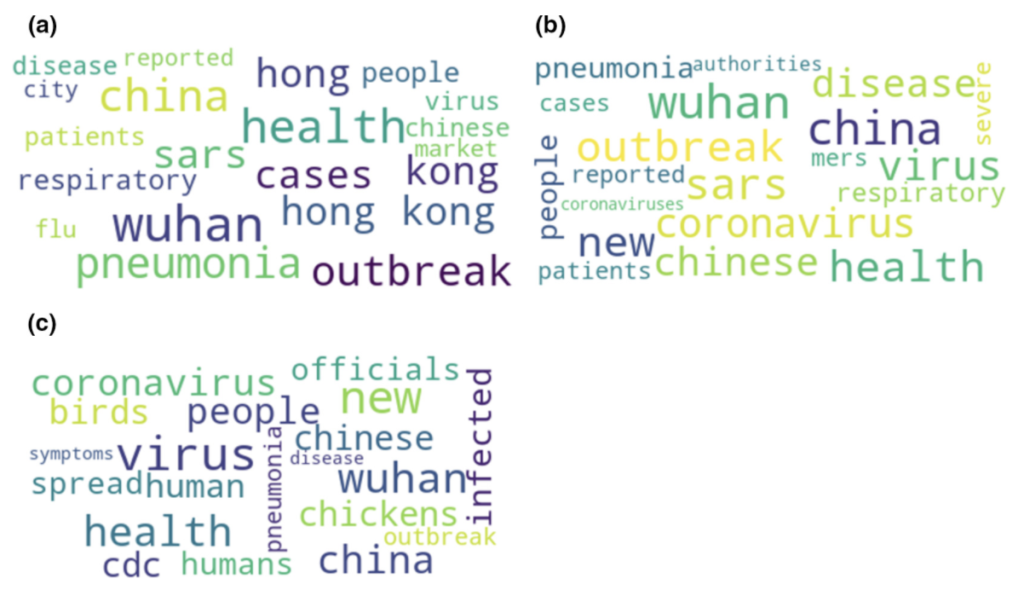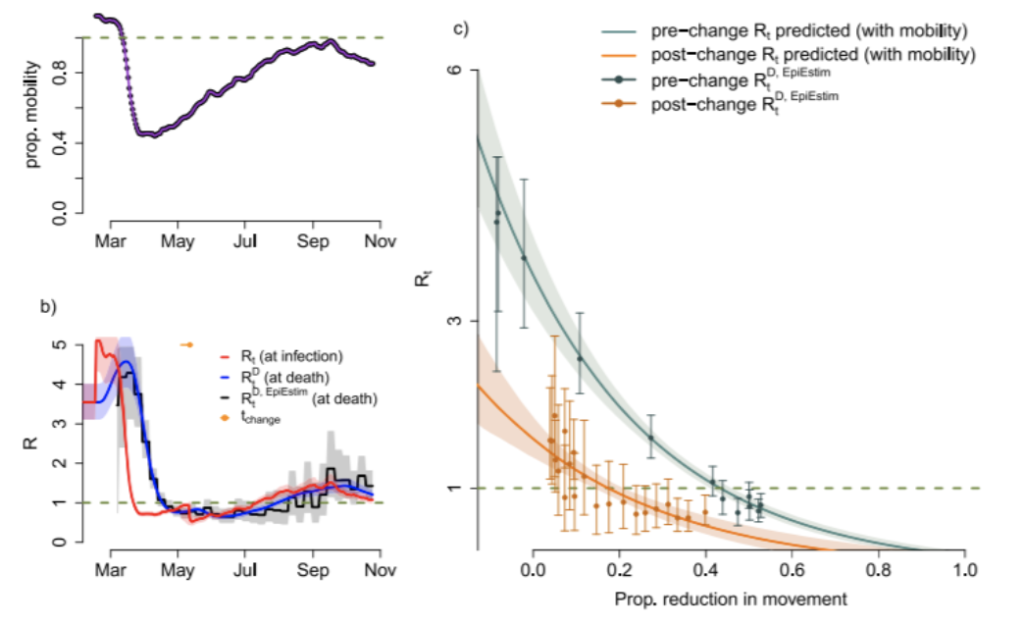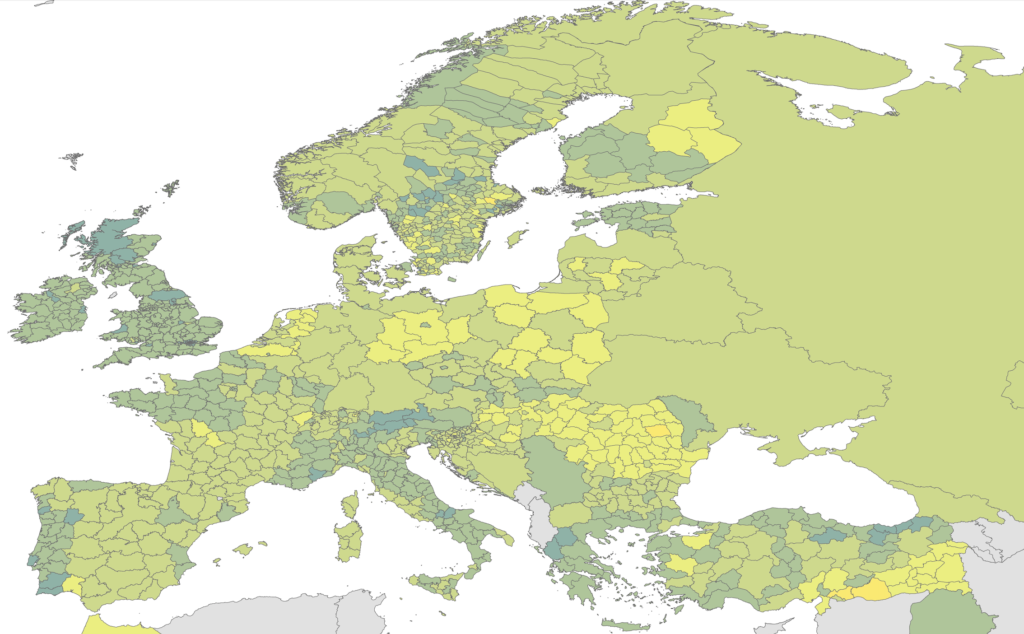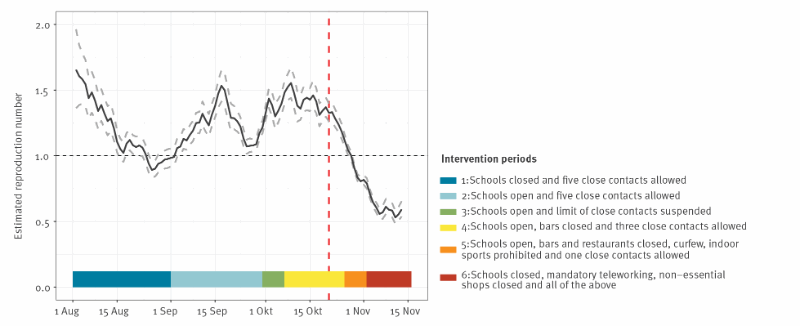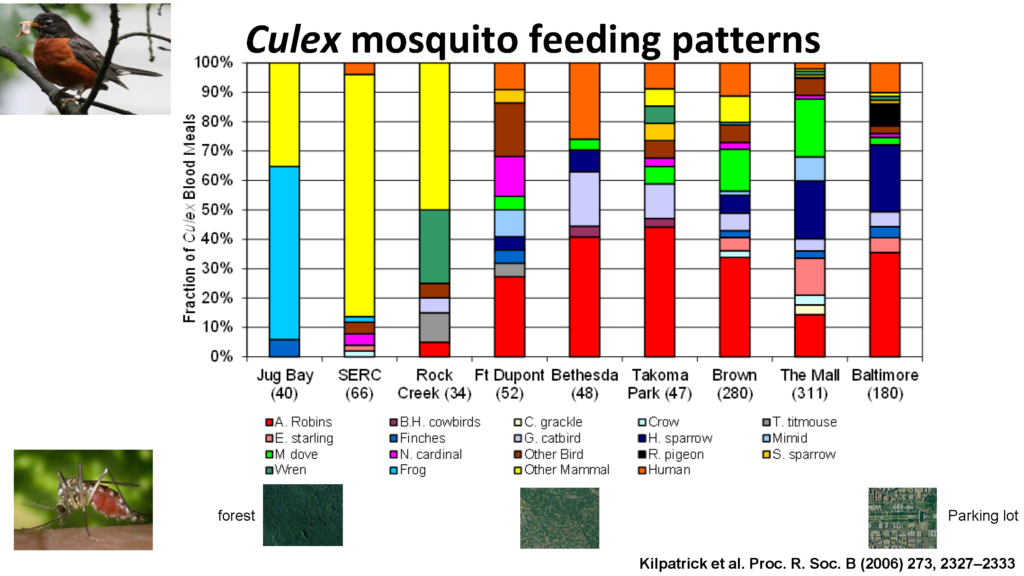Ticks are an important driver of veterinary health care, causing irritation and sometimes infection to their hosts. In a newly published paper, Elena and her team of co-authors explored epidemiological and geo-referenced data from > 7 million electronic health records (EHRs) from cats and dogs collected by the Small Animal Veterinary Surveillance Network (SAVSNET) in Great Britain (GB) between 2014 and 2021 to assess the factors affecting tick attachment in an individual and at a spatiotemporal level. Their results can inform targeted health messages to owners and veterinary practitioners, identifying those animals, seasons and areas of higher risk for tick attachment and allowing for more tailored prophylaxis to reduce tick burden, inappropriate parasiticide treatment and potentially tick-borne diseases in companion animals and humans.
So far, the relationship between biodiversity and TBE risk has been scarcely evaluated. Therefore by considering habitat richness as a proxy for biodiversity, Giulia Ferrari and her team modelled the association between the habitat richness index (HRI) and the distribution of human TBE cases across Europe. They validated their findings at local scale using municipality data collected in Trento and Belluno provinces, in northern Italy.
Tick and Tick-borne disease (TBD) risk is dependent on interactions within complex, systemic networks of highly localized social and ecological variables. In the absence of effective programs, risk detection and prevention has become the responsibility of individuals at local scales, making them local actors in identifying and implementing solutions. In this PhD work, Iyonna and her team aimed to gain a holistic understanding of TBD risk from an actor-centered approach within its social-ecological dimensions.
Pachka Hammami and her team developed a multi-level model including the population dynamics of Aedes albopictus mosquitoes in a temperate environment and the epidemiological dynamics of dengue. They presented a Graphical User Interface (GUI) designed to support surveillance and control of arboviruses in Europe. Based on the developed model, the R/Shiny application provides a facilitated way to run complex simulations taking into account spatial and temporal variability in temperature and rainfall as well as spatial variation in land cover, population density and mobility patterns.
In this presentation, Sarah Valentin presents the results of our recently pusblished paper which focuses on how outbreak-related information disseminates from a primary source to to a definitive aggregator, an EBS tool. She and her team analysed news items reporting avian influenza outbreaks in birds worldwide between July 2018 and June 2019 and detected by PADI-web and HealthMap.
During the MOOD Science Webinar, Jasper presented his work on tick-borne encephalitis surveillance within the EU/EEA. This work was executed as part of his traineeship at ECDC. He provided a summary of changes in the epidemiology of tick-borne encephalitis between 2012 and 2020., and elaborated on some of the challenges related to data interpretation. The results can be used to update prevention strategies, including vaccination and health promotion campaigns, within the EU/EEA.
During the MOOD Science Webinars, Francesca presented her work conducted within the MOOD project framework, focused on the assessment of the ecological factors that are shaping the spread of tick-borne encephalitis (TBE) in Europe, using official epidemiological data provided by the European Surveillance System (TESSy).
During the MOOD Science Webinars, Henna presented her work conducted within a Finnish VECLIMIT-consortium and shares results from a national level KAP-survey related to endemic vector-borne diseases in Finland. The aim for the questionnaire study was to assess knowledge, attitudes and practices of Finnish residents concerning these diseases and to reveal misconceptions that may represent obstacles in behaviour change.
During the MOOD Science Webinars, Anniina presented her master’s thesis work: Vector-Borne Diseases Stakeholder Mapping in Finland: A One Health Approach. The aim of this qualitative semi-structured interview research was to map and analyze the current and missing stakeholder/ actor interactions and information flow related to vector-borne diseases and their management in Finland, within a One Health context.
During the MOOD Science Webinars, Timothée presented his latest work on a large-scale sectional study conducted in 2021 about the state-of-art of epidemic intelligence activities among national public and animal health agencies in Europe. The study was conducted as part of the MOnitoring Outbreaks for Disease surveillance in a Data science context (MOOD – Horizon-2020). The study will be published in 2023.
During MOOD science webinar, Alexandre Hobeika presented the results of a socio-political study about the relationships between modelers and decision-makers during the Covid-19 crisis, at the national level in Finland and France.
In this webinar, Serafin Gutierrez presented a collaborative work on West Nile virus (WNV) and Usutu virus (USUV), including teams involved in both human and veterinary health. the team has evaluated the prevalence and genetics of WNV and USUV in a cross-sectional study in humans, dogs, horses, birds and mosquitoes in the French Camargue area, between 2016 and 2020. Their findings support endemisation in the study region.
Bahdja Boudoua presented her work which’s objective was to understand how health information (signal) is disseminated from a primary source (transmitter) to a final source (EI system) through quantitative and qualitative network analysis methods.
One of the sectors where AI has been embed into rapidly specially in the past few years is Healthcare. The advantages that might come from this are enormous in terms of time managing and efficiency, so enormous that we are missing the point: caring. It is critical to apply ethics and oversight when handling individuals’ data that is so crucial and impactful. During this session, Gema Galdon-Clavell went through the complexity behind this data and systems and the best practices to ensure success.
The presentation is about the importance of relative spatial information (RSI) in EBS. Mehtab Syed described the approach to extract RSI from different unofficial media sources and how to accurately geographically map this information for different events in EBS.
PADI-web is an online tool that collects and processes documents from the Web. Its goal is to allow daily surveillance in epidemiology, by exploiting unofficial sources such as local news. This talk described how PADI-web is working, and what it can provide to the end-user. Also, it takes a look at the future of PADI-web and how it is possible to address its current limitations.
In this talk, Julia Haas presented a newly developed application showing graphs for COVID-19 “status” in Germany. The graphs refer to incidence values and change of new cases in different regions of Germany.
The aim of this talk is to share ideas about the implementation of a web portal that could be used to centralize data on tick dynamics and infection by tick-borne pathogens. These data could be used to model the spatial and temporal distribution of ticks and in the longer term, the distribution of tick borne diseases.
For our first MOOD science webinar of 2022, we invited Timothee Dub, Research Manager in the department of Health security of the Finnish Institute for Health and Welfare (THL) to discuss the results of his paper published in Emerging Infectious Disease ‘Game Animal Density, Climate, and Tick-Borne Encephalitis in Finland, 2007–2017’.
In this talk, Karine Chalvet-Monfray illustrate the results of 7 years of standardized monthly observations of tick activity and the associated model taking into account various environmental and meteorological factors.
In this edition, Nadim Rahman talked about the COVID-19 data portal and platform, providing background and insight into the challenges and set up of this type of resource.
In this talk, Theresa Smith discussed the statistics and data science challenges arising from her ongoing work to develop community-scale monitoring systems for COVID-19 and other diseases using regular sampling and testing of wastewater. More on this project can be found at this website.
Alan Radford is a professor of veterinary health informatics at the University of Liverpool. He is the coordinator of the Small Animal Veterinary Surveillance Network (SAVSNET), which exploits electronic health records from veterinary practitioners across the United Kingdom, and identifies significant trends in diseases. Alan shared his experience in big data analytics across the network.
John Kinsman presented his work on “Social listening and the use of qualitative data for monitoring health behaviours and trust”, exploring the role of social listening via social media, and its related challenges, in support of the “infodemic” and COVID-19 outbreaks responses. .
Diana Inkpen presented some of the methodological and ethical aspects behind her latest book “Natural Language Processing for Social Media” (3rd Ed.), focusing on NLP health care applications, NLP-based user modelling and event detection in text mining from Social Media.
William Wint is Senior Analyst for the Environmental Research Group of Oxford – ERGO, and an SRA at the Department of Zoology, University of Oxford. For MOOD, William focuses on providing covariate and disease driver datasets for risk assessment, and on modelling the distributions of the vectors and hosts of a range of MOOD’s target diseases. During the Science Webinar, William illustrated the latest developments about his reserch about vector and host modelling.
Marvin N. Wright presented the results of his latest paper, just accepted in Machine Learning journal, explaining the conditional predictive impact (CPI), a model-agnostic interpretable machine learning method which can handle correlated predictor variables and adjust for confounders.
In this presentation Mathieu Roche discussed the use of different datasets related to COVID-19, e.g. scientific publications, news data (PADI-web, MedISys), social media data (Twitter). The extracted terminology has been used (i) for surveillance systems (i.e. web crawling and information extraction tasks) and (ii) for spatio-temporal analysis of tweets dealing with COVID-19.
In this MOOD Science Webinar, Laura Kramer discussed her comprehensive research paper “Introduction, Spread, and Establishment of West Nile Virus in the Americas” published on the Journal of Medical Entomology, illustrating the complex relationships among West Nile Virus (WNV), vector mosquitoes and vertebrate hosts, as well as how certain environmental variables – including land use and climate – affected the spillover risk to humans in the United States since its introduction.
Within the MOOD Project, Esther is working, together with MOOD partners, on identifying how to improve the integration of the threat of disease X in existing procedures of epidemic intelligence. She has supported analyses on ECDC mortality data related to different countries’ Covid-19 measures in the context of MOOD’s focus on early detection, preparedness, and monitoring of infectious diseases. Esther illustrates the effects of physical distancing and school reopening on cases reporting and age-specific SARS-CoV-2 transmission patterns, as discussed in the recently-published paper she co-authored.
Renaud Lancelot is a veterinary epidemiologist with 20-year experience in field research, mostly in continental Africa and Madagascar. His research focuses on livestock infectious diseases of tropical origin and their vectors. Renaud explains the differences and appropriate applications of Generalized linear mixed models (GLMMs) – extensions to the generalized linear model (GLM) in which the linear predictor contains random effects in addition to the usual fixed effects – and marginal models which are used when estimating fixed effects.
Pierre Nouvellet’s presentation focuses on his team’s research in which they examine mobility data in order to analyze the relationship between transmission and mobility for 52 countries around the world.



